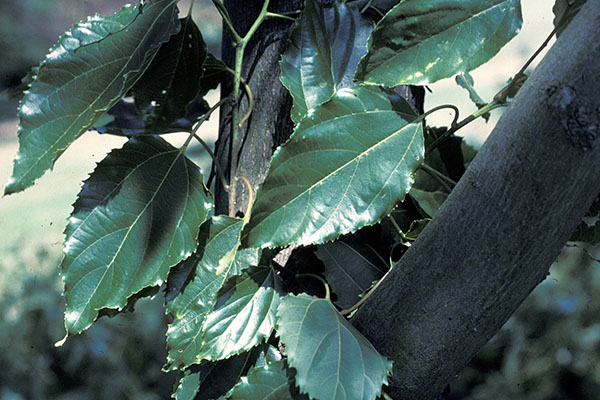Hibiscus syriacus
Shrub Althea, Rose-of-Sharon
China, India
Shrub or small tree, very erect but occasionally spreading, with numerous upright branches.
Move container-grown, balled-and-burlapped or bare root as a small plant (5 feet or less); transplants well; grows in about any soil except those which are extremely wet or dry; does best in moist, well-drained soils which have been supplemented with peat moss, leaf mold or compost; pH adaptable; full sun or partial shade; prefers hot weather.
Valuable for late season flowers, groupings, masses, shrub borders but does not deserve speciment use; has and can be used for screening and hedges.
Palmately-veined, coarsely-toothed, three-lobed, medium green leaves (to 4 inches long) are attractive during the growing season but produce no fall color.
Buds are not evident, their position usually occupied by the scars of fallen inflorescences or branch vestiges.
Glabrescent, gray.
Perfect, 5-petaled, white to red or violet, or combinations, single and double, short-stalked, broad campanulate, 2 to 4 inches across, July, August through September.
Dehiscent capsule, .75 inches long and wide when open, brown, 5-valved and persisting through winter.
Seed, cuttings.
'Agnes' - Double, large, flat, mauve-purple flowers.
'Amplissimus' - Double, red.
'Ardens' - Double, rose-purple.






